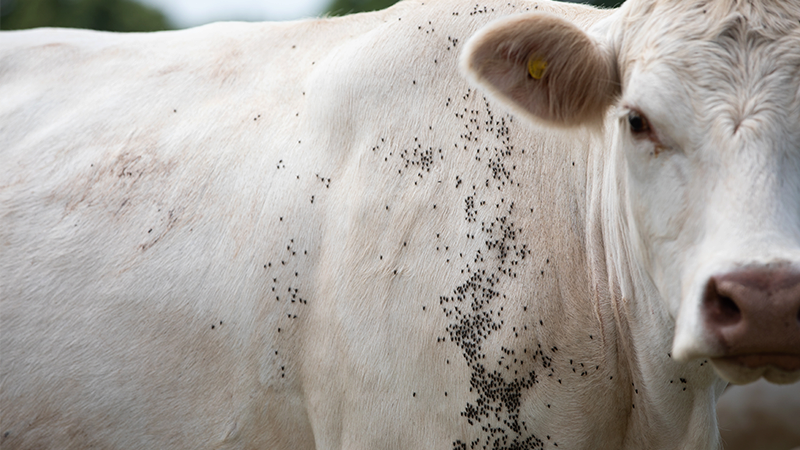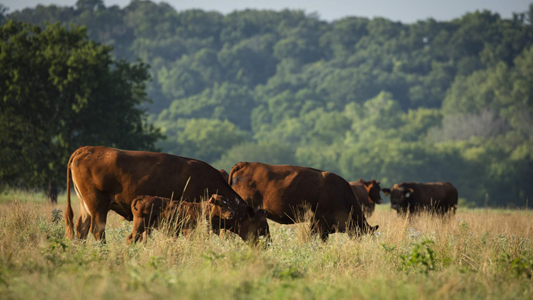
In the ongoing battle against horn flies, cattle producers are constantly searching for effective, natural solutions. Garlic has long been rumored to provide benefits in repelling flies or reducing larvae in manure, but does the science back up these claims?
To answer this question, Central Life Sciences conducted multiple studies to evaluate the efficacy of garlic in free-choice mineral supplements. In a recent discussion, Casey White, Senior Director of Technical Services and Innovation, and Kylie Sherrill, Field Service Entomologist, shared their findings.
Investigating Garlic as a Fly Control Method
Over the past four years, Central Life Sciences has conducted several studies to determine whether garlic could effectively reduce horn fly populations. The research was prompted by anecdotal reports suggesting that garlic in loose mineral supplements might work as a repellent or even act as a larvicide. However, as White explains, “We wanted to know if there's anything there. We hear all the time through anecdotal evidence that garlic included in a free-choice loose mineral is either repelling flies or controlling the larvae. But no one really knows if it works and if it does, how it works.”
The Results: No Consistent Control
The first study, conducted in Louisiana, provided unexpected results. Not only did the garlic-treated cattle fail to show a reduction in horn flies, but their fly counts were actually higher than the control group.
Sherrill elaborates, “Unfortunately, that's something we've seen with garlic. As an industry, we would love to have another tool in the battle against horn flies, especially on pastured cattle. The problem is, we cannot get consistency out of it. Not only in our own studies, where we're constantly seeing it fail to control flies, but even being higher than untreated control cattle.”
These findings were not unique to Central Life Sciences. Similar results have been observed by the USDA, university researchers, and other industry partners, all pointing to garlic’s unreliability as a fly control method.
The Issue with Garlic Intake
One major challenge with garlic as a supplement is inconsistent intake among cattle. Various forms of garlic—oil, powder, or shredded—require different inclusion rates in mineral mixes. However, reaching an effective dose that cattle will consistently consume is difficult.
Sherrill explains, “There are palatability studies showing that at a certain level, garlic will turn animals off the supplement. If you don’t have consistent intake, you’re not going to get control of anything.”
No Registered Garlic-Based Fly Control Products
Another critical factor to consider is the lack of regulatory approval for garlic as a fly control ingredient. While some essential oils and 25(b) exempt products have state registrations, garlic does not currently have an EPA-registered form for fly control. According to White, “It’s hard when we’re out talking to producers, and they ask about garlic in free-choice mineral. There’s not a registered form of garlic at the EPA, and there’s no data to support those products and that use pattern.”
Final Verdict: Garlic Isn’t the Answer
Both studies—one in Louisiana and another in North Carolina—confirmed that garlic-treated cattle showed no reduction in fly populations compared to untreated control groups. Whether the proposed mode of action is repellency or larval reduction in manure, the data simply does not support garlic as a reliable fly control method.
For cattle producers seeking proven fly control solutions, Altosid® IGR provides a scientifically backed, highly effective, and economical solution to break the horn fly life cycle and protect your cattle.
Want to learn more? Watch the full discussion with Casey White and Kylie Sherrill in the video below.


